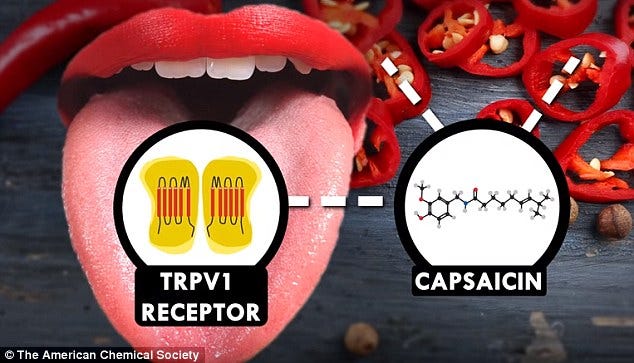Why Is It Spicy?
From the science behind it to its social media influence - can you handle the heat of this meme?
Picture this: it’s Monday night and you’re in the kitchen with a friend making pasta after a long day. They taste the sauce and find it a little bland, opting to add in some fresh chilies for an extra kick. To them, it is now perfect…but not everyone can handle the heat.
If you’ve spent any time on social media between 2020 and now, you’ve surely seen videos using the viral audio by TikTok user @kissmytisha, saying “why is it spicy?” in a deep voice. This sound, and its remixed version from 2022, quickly became a popular lip-dub audio for videos of people drinking carbonated beverages, using mint toothpaste, and especially, eating spicy food!
Users all over the world have used this audio to share videos poking fun at people reacting in discomfort to the feeling of trying something new and surprisingly unpleasant. New viewers are then inspired to create their own version, yielding thousands of masterpieces asking, “why is it spicy?”.

Okay but in all seriousness though… why IS it spicy? Spicy foods contain a chemical called capsaicin, which when eaten activates receptors in your mouth called TRPV1 receptors. This sends the same signal to your brain as heat and pain does, leading some people to experience a painful, burning feeling in their mouth. In fact, both menthol (the capsaicin analog in mint) and carbon dioxide (the capsaicin analog in carbonated beverages) trigger TRP-family receptors, thus explaining why people are finding very minty and very fizzy things spicy also. Some people can tolerate this feeling better than others because their mouth is desensitized from repeated exposure, meaning they require more of the compound to trigger a reaction.

You’re probably wondering at this point why this ‘reaction’ that took the internet by a storm was so important. People poke fun at each other all the time, surely these videos can’t be that significant. For spicy food specifically, this trend exposed a wider audience to spicy foods. According to ScienceMeetsFood, people’s relationship with spice is largely shaped by their culture or environment, and this trend gave people an opportunity to share their culture with others all over the internet. Not to mention meme marketing is a powerful tool employed by brands to quickly position their products in a way that is relatable and appealing to the younger generations. For that reason, many hot sauce or spicy food brands opted to use this audio to reach their target audience.
 Tiktok failed to load.
Tiktok failed to load.Enable 3rd party cookies or use another browser
The next time you try something that’s a little too spicy (like maybe your friend’s pasta), think of the TikTok videos, embrace the heat, and try to have a laugh at your own expense. Spice lovers like me do still feel the same burn you do, it may just take a little more to get to that point – which we often enjoy and seek out, but that’s another story.






I loved how you took the question of "why is it spicy" and interpreted it literally (explaining the mechanisms behind spice). It wasn't where I thought this piece was going and the unexpected switch kept me engaged and reading!